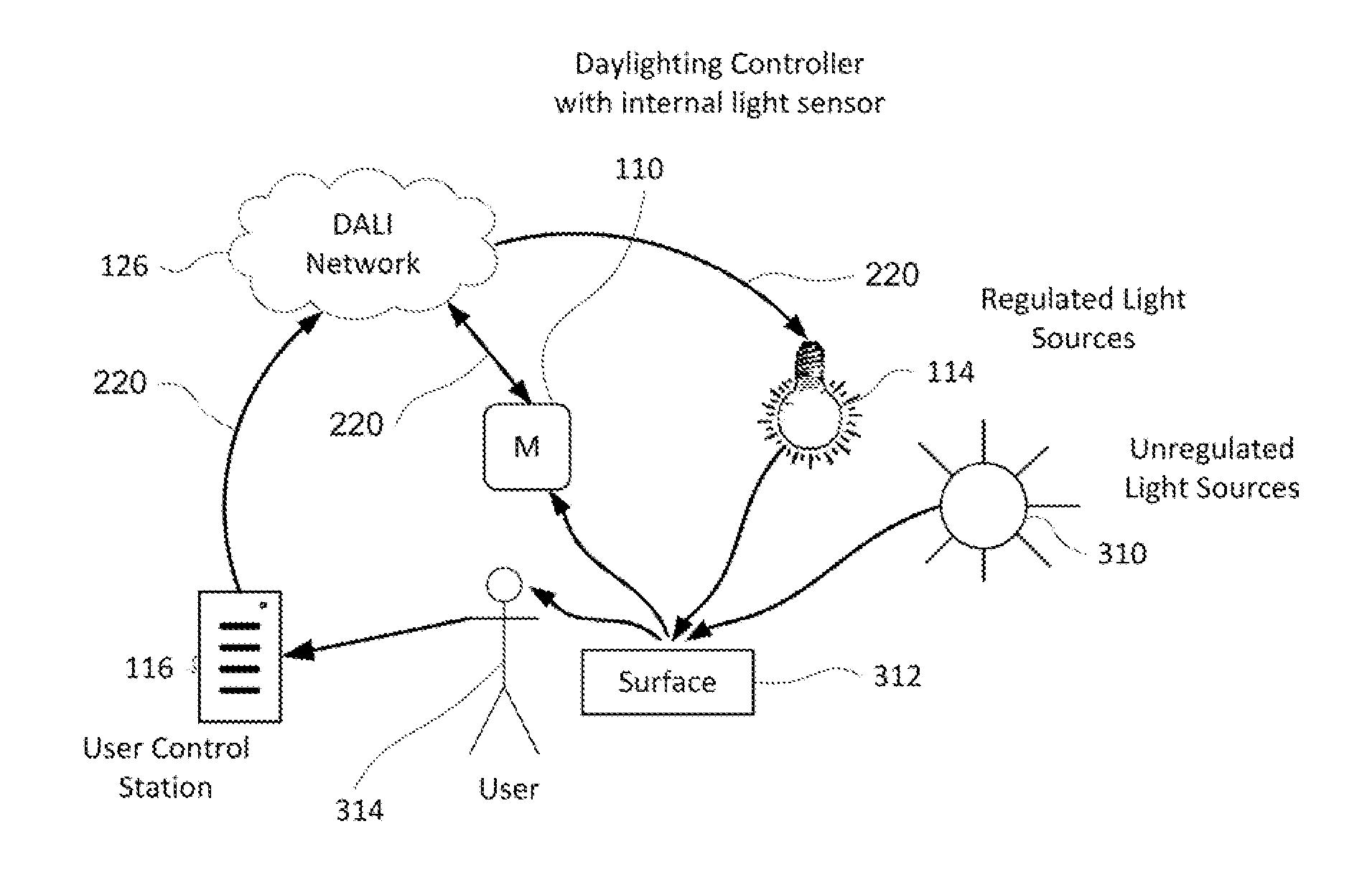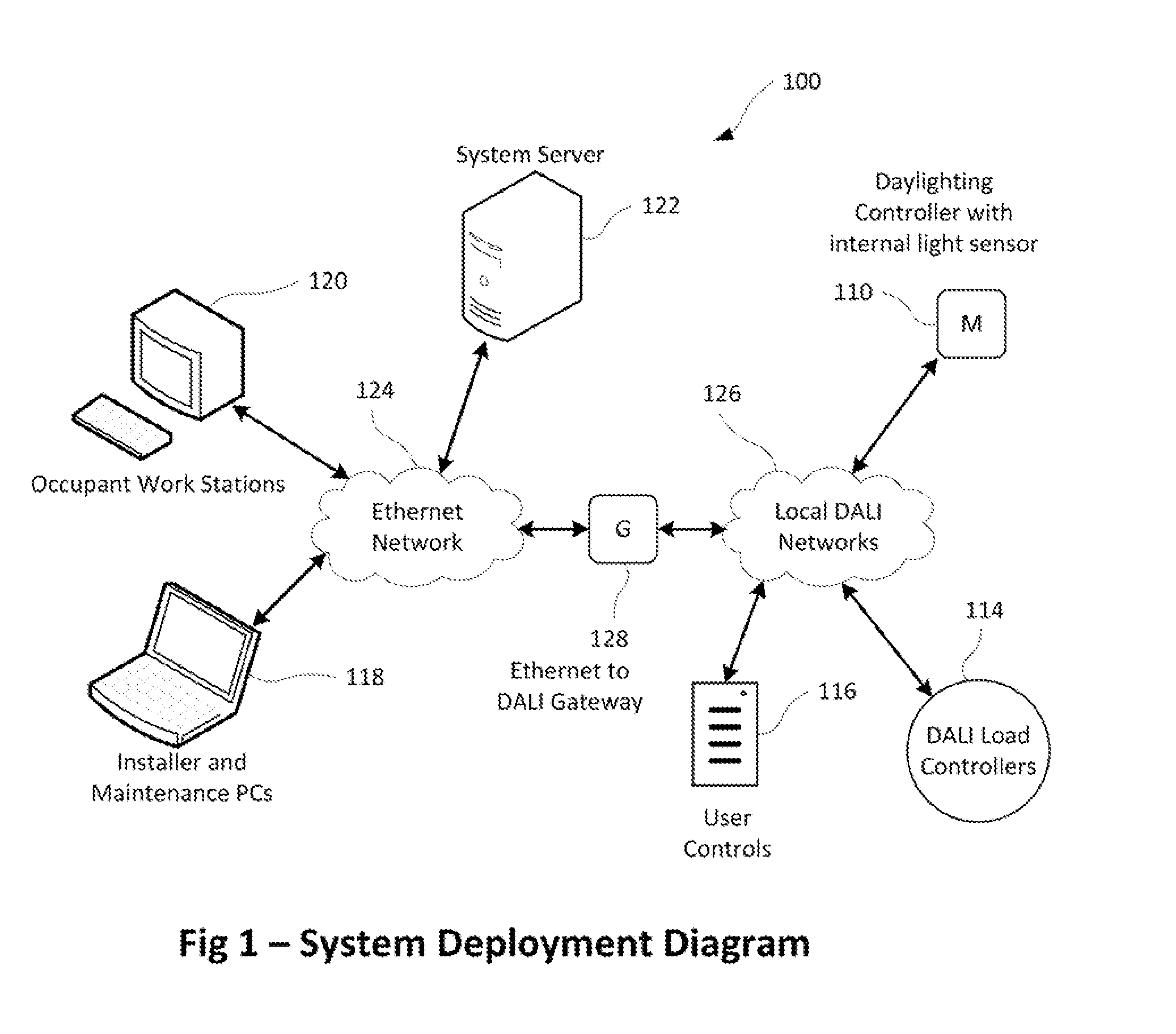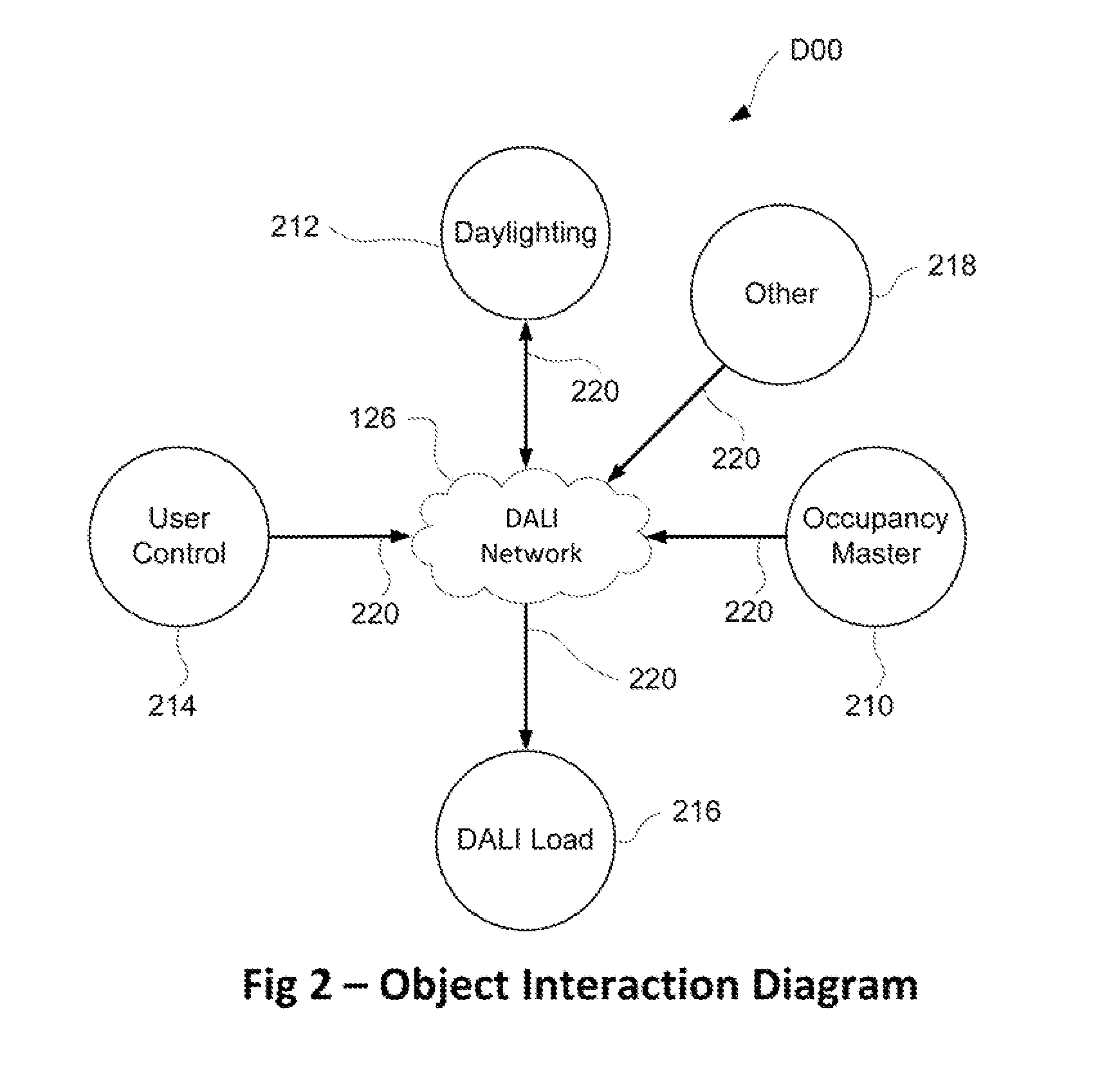Self Calibrating, Adaptive Setpoint Daylighting
a self-calibration and adaptive technology, applied in the direction of lighting devices, lighting sources, electrical devices, etc., can solve problems such as inability to set temperature, and achieve the effects of reducing light level, improving lighting management, and simplifying operation
- Summary
- Abstract
- Description
- Claims
- Application Information
AI Technical Summary
Benefits of technology
Problems solved by technology
Method used
Image
Examples
Embodiment Construction
[0029]FIG. 1 is a simplified system deployment diagram of the preferred embodiment of the present invention showing the primary physical elements. These elements consist of components connected to local DALI networks 126 and remote components connected to an Ethernet backbone network 124. Remote components consist of a plurality of user and user surrogate devices such as occupant work stations 120, installer and maintenance PCs 118, system servers 122, and other devices that can send and receive messages over the network 124. Local components consist of a plurality of sensors 110, user controls 116, and DALI compliant load controllers 114B connected to local DALI networks. Local and remote networks are connected together via gateway devices 128 that allows messages to pass between the two networks.
[0030]Each physical component is a network node with the capacity to interact with the network and to store and run computer instructions. These computer instructions are typically bundled...
PUM
 Login to View More
Login to View More Abstract
Description
Claims
Application Information
 Login to View More
Login to View More - R&D
- Intellectual Property
- Life Sciences
- Materials
- Tech Scout
- Unparalleled Data Quality
- Higher Quality Content
- 60% Fewer Hallucinations
Browse by: Latest US Patents, China's latest patents, Technical Efficacy Thesaurus, Application Domain, Technology Topic, Popular Technical Reports.
© 2025 PatSnap. All rights reserved.Legal|Privacy policy|Modern Slavery Act Transparency Statement|Sitemap|About US| Contact US: help@patsnap.com



